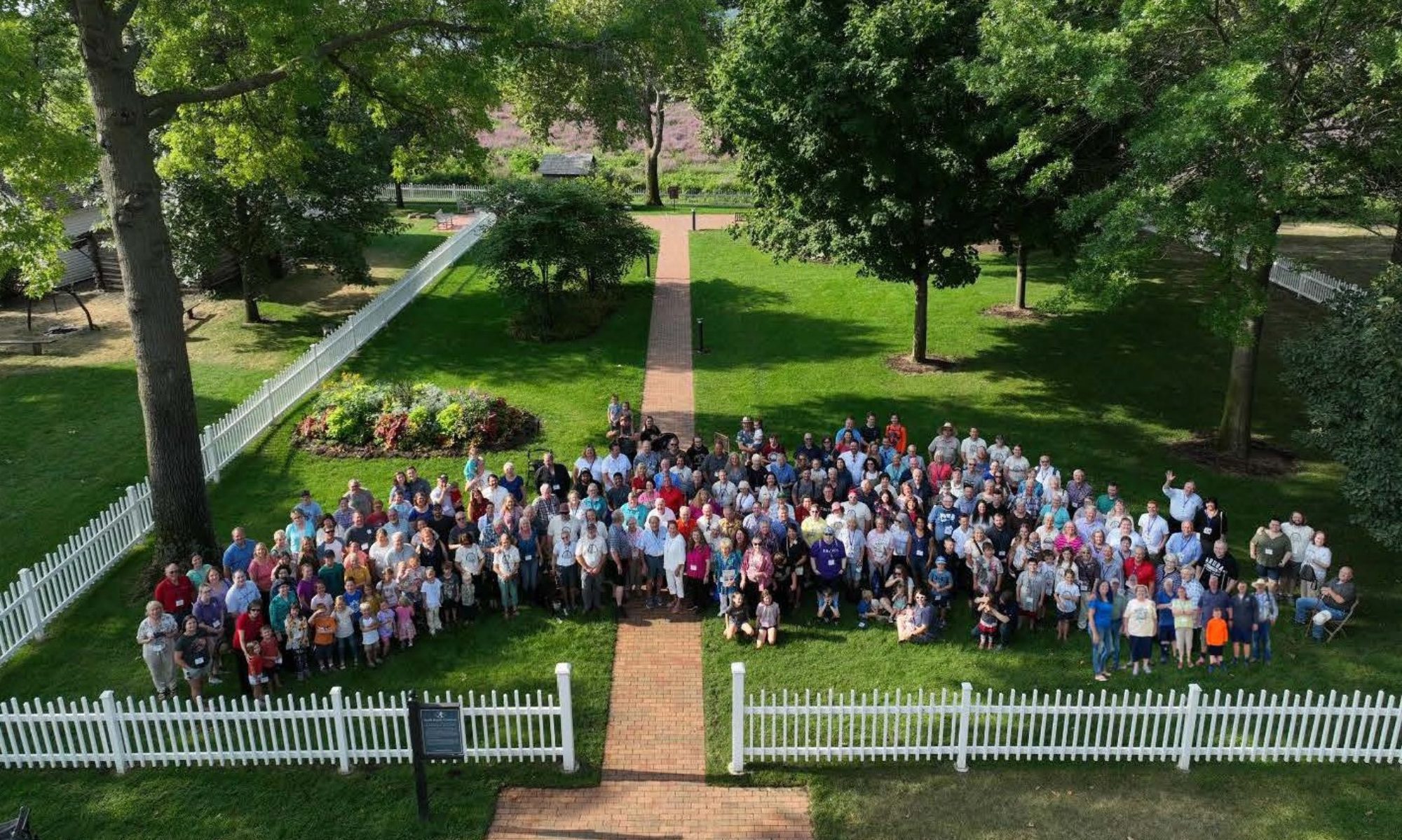By Dr. Craig R. Frogley
We were gathered for some family fun. It was game time but, by design, the game, more than amuse, would change outlooks and perspectives of our family members. Each person was given a slip of paper to defend. On each slip was a word: lights, indoor-running-water, indoor bathroom, electricity, heater, stove, refrigerator, etc. All were then informed that there had been an earthquake and one of the items would be permanently lost. There was lively debate as each person defended his or her item. Once the successive disaster and ensuing discussions were finished and preferences had narrowed, only one item remained – electricity.
This process and discussion were followed with more slips: mother, father, bishop, uncles, aunts, cousins, brothers, sisters, etc. Then again with more: eyesight, hearing, touch, walking, use of arms, use of hands, etc.
Each round included the item, person, and finally the value left from the previous round. Without exception the preferred item or person became among the first to be eliminated with the introduction of new items, which became increasingly personal and value oriented. When we were done defending, agreeing, voting, etc. we had each clarified what was most important by imagining what life would be like without it as compared to others of life’s puzzle pieces. In reality, life’s experiences and adversities give us this same opportunity until we live according to what we value most.
So, what is a value? The Webster’s on-line dictionary includes:
…past participle of Latin valÄ“re to be of worth, be strong.Â
7: something (as a principle or quality) intrinsically valuable or desirable…
What causes one thing to be valued or valuable and part of our lifestyle, and other, seemingly desirable things, unvalued? Some things are so valued that we are willing to change behavior or forego opportunities to adhere to them. Things that may seem of value to some are passed over by others as worthless, either by decision or ignorance. For example, the principle of honesty would motivate one person to forego opportunities to personally profit, while another would gladly cheat, steal, etc. in order to gain. Is it perspective or training, tradition or understanding that gives things or principles their value? The cheater, for example, might happily get paid more than something is worth, only later to find that he has lost a customer. He may find that he is always suspicious of others and consequently has created an internal culture of non-trust amongst his relations and contacts. Perhaps you want some benefits enjoyed by an acquaintance, but if you don’t see or understand the connection between the benefit and their beliefs and actions, you may be unwilling to discipline your own behavior (sacrifice other valued habits), and thus lose the desired benefit. If only you knew how to change a principle into a personal value, then it would become natural to you and the benefits would be yours for the long term.
One suggestion is to see the idea of “values†as a triangle:
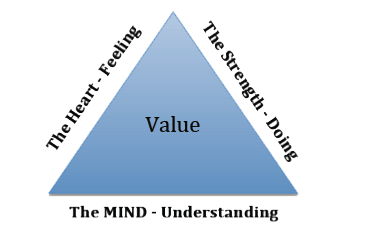
I may understand the benefits of being honest to my self and the community but if I loved immediate profit more, and thought that I could get away with cheating or stealing, I would behave according to the profit value rather than the honesty value. Later when the thrill of acquisition was past and the need for trust became pressing, then being honest could eventually change the feeling component of my triangle sufficiently enough to generate honesty as a consistent personal value. This has been called “Values Clarification†as in the afore mentioned game. We often gain understanding, and thus learn to love a principle, in the study or practice of behavior consistent with the value. In the effort to impart values, it has been shown that values are better caught than taught.
This planting “family values†into young hearts becomes ever more challenging as the world gains direct access to budding appetites through media and technology. That so many would directly seek profits using any means that appeal to appetite stimulation, regardless of the moral side effects, creates significant opposition. Research has repeatedly shown that adopting key family values can dramatically assist families in this vital contest for the minds and hearts of the rising generations and protect our children from the critical generational consequences. Modern family science research has identified several key common values in successful, cohesive families that, like good trees, have been judged by their fruits.
Families differ on so many levels that determining the success of one family as compared to another can seem like comparing mangoes to kiwis. But even diverse fruits can be judged by their nutritional value rather than their appearance. Though parental failure and success might be difficult to measure, there are well-studied characteristics and values, common to happy productive (measures of success) parents, children, and ensuing posterity. However, rendering a “failure judgment†also assumes that all efforts to assist family members towards becoming productive in society have ended, and that progress, or any hope of it, has ceased. Parents have not failed until they have given up, so a historical study can give valuable insights since the effects over several succeeding generations may be available.
Since family influence is not over until all has ended, a study of the fruits of a multi-generational family from historical research could be most informative. This, especially since the family studied for this article, is the first family of the last dispensation. Thanks to gracious permission of Dr. Kyle R. Walker, I will extract the family values he has identified in his PhD thesis available here or here. He specifically targets numerous historical accounts of this effective nineteen-century family. His doctoral thesis is entitled in “A Family Process Analysis of a Nineteenth-Century Householdâ€. Quotations, unless otherwise noted, are taken from this thesis.
From a well-established list of examined processes, characteristics and values, Dr. Walker highlights six inter-related categories that are easily identifiable within historical records and that don’t require an interview with the family to evaluate. These include cohesion (unity), conflict management (problem solving towards harmony), resiliency (ability to bounce back), religiosity (faith and works), family work, and family recreation (play, family together time, singing, discussion, etc.). On closer examination some of these could be defined as values while others seem to be strategies/behaviors used to implement the values. Perhaps that is because these values are so intertwined in creating successful families in that the behavioral aspect of one value becomes a strategy for implementing another.
It can be said for example, that a cohesive family is one that manages conflict effectively and is resilient after crises, and thereby successful. Though cohesion is itself a value, one can ask what values fuel cohesion and provide reproducible results in other families? Likewise, just as managing conflict and bouncing back are to be valued, they are also strategies towards cohesion. It can then be asked which management strategies are more measurably effective in both meeting stress and bouncing back from its culminating crises? For example, Dr. Walker noted that those families that valued religion (internally and externally) managed conflict and were resilient to life’s crises more effectively than those who were not religious. So though religious belief is a value, it is also perhaps the “understanding-MIND†component (from the triangle) that persuades family members to sacrifice personal benefits towards resolving conflict because they are motivated by a link to higher causes (More on this later.) Likewise, family unity (a value) was enhanced as the family worked and played together – both values that served as cohesive strategies that enabled unity.
Though not strategically incorporated by our early Smith family as a result of any schooling, these specific strategies can be seen today as applicable for parents seeking direction in the ongoing battle for family effectiveness. For our purposes, we will call them Smith Family Values – though they were hardly exclusive to them.
It cannot be stated too often that these and all values are best caught rather than just taught. I will examine each of them individually.
COHESION:
Dr. Walker defines this value as an emotional bond between family members. In another study discussed by Dr. Randal A. Wright, this bond is amplified and strengthened when the parent is outwardly and verbally expressive.
This value produces a unified family where parents and siblings develop interpersonal communication, loyalty, service, and love. Today’s struggles with the realities of two-spouse employment, demanding children’s sports and lesson schedules, rising divorce rates, a variable economy, etc., family cohesion has been replaced with family survival. Which often degenerates into individual survival, making family cohesion seem like a myth.
In the face of these realities one might ask if family cohesion is just old fashioned or if there are advantages that would help the parenting process and secure the children into valued productivity. We note that many studies abound that show, for example, a young woman’s sense of security, modesty, self-esteem, etc. are each tied to her relationship with her father. Or, that a young man’s respect for girls and women, sufficient to over-ride his budding hormonal saturation, is aided by the respect manifest in the relationship between his mother and father. The profound respect that Joseph Sr. and Lucy held openly for each other is frequently demonstrated, as in one example where Lucy writes, “The joy I felt in throwing myself and my children upon the care and affection of a tender husband and father doubly paid me for all I had suffered.â€[1]
Children’s willingness to listen to others or share personal property develops through being listened to by non-judgmental parents who they see making personal sacrifices to provide for them. Joseph Sr. and Lucy were found, without fail at the bedside of sick and suffering children, literally waiting upon them through the night. Their first lessons on charity, sacrifice, community service, and other cultural strengthening behaviors, which in the future will make them valued citizens, are learned in a cohesive family. If parents value family togetherness and unity (heart, mind, and strength) then children catch that value, for values are better caught through experience than taught with words!
Father and Mother Smith caught cohesion as a value from their parents. Asael Smith not only exemplified this value in his parenting but also spoke and wrote about it as he could see his life ending. He wrote:
“…know one another. Visit as you may each other, comfort, counsel, relieve, succor, help and admonish one another… Join together to help one another.â€[2]
The Mack family story includes successive sisters tending each other’s sick-bed over extended periods, brothers sharing large sums of money with sisters, etc.
The Joseph and Lucy Smith family history is rich with stories where this cohesive relationship was extremely self-sacrificing and binding. When one person struggled, all struggled with them. They were a very unified family, which allowed them to accomplish all that continues to influence millions for good today.
Perhaps a modern parent struggling with the teenager who desires to be with friends rather than family might ask, “What behaviors might encourage cohesiveness or unity?†In using Dr. Walker’s four included and different professional models for measuring family conditions, it could be recommended that to augment a family’s cohesion-value parents might add the following connected behaviors: goal sharing; expressiveness; intra-family service/sacrifice; “work, play, and worshiping together-timeâ€; building others; listening; self-reliance; solution-thinking; justice; mercy; patience; etc.
To summarize this value, one might visualize again a possible component triad:
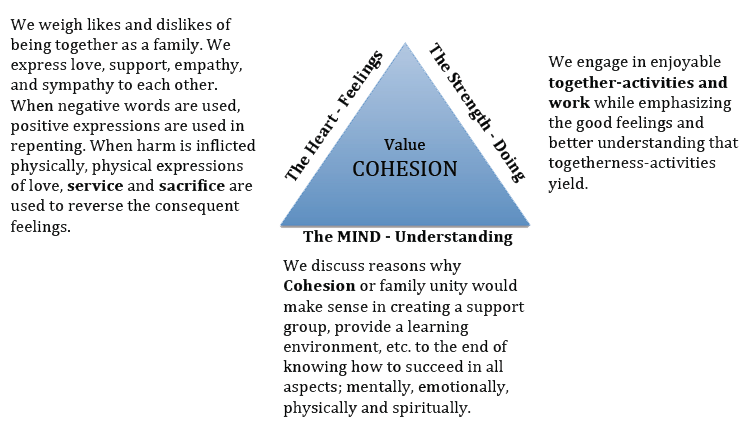
With consistency over time the value of family cohesion will be caught and lived as a natural consequence of the resulting lifestyle.
FAMILY WORK
As one can see, the family values of family work and recreation also become strategies for internalizing family cohesion (unity). It is through meaningful time spent together, that bonds are formed. When family members engage in work that yields a mutual benefit, not only is communication time increased but also a sense of common purpose develops, as there is a sense of mutual help, synergy, and accomplishment. If on the other-hand the benefit is unilateral, benefiting only one side, resentment may develop. Youth may not be capable of appreciating the long-term or even near-term benefit of family work time without help. The value-triad can be of assistance; the parent works to make sense using language and examples that speak to the young person’s understanding and feeling levels. By way of experience, a parent might demonstrate synergy by opening an old watch and showing a pile of watch parts. The value of the parts total but a few pennies while the watch may be worth hundreds of dollars. Because the parts work together in unity, each doing their own work, the watch value is multiple times more than the non-integrated parts alone. Then short term benefits can be provided for those with short attention spans, after short work periods, like points that can add up to purchasing power of something they already value such as items, food, time allowance, etc. will complete the triad and grow within the child the value of family work-time. A garden will benefit the family budget but if a child has nothing to do with paying the bills the benefit won’t seem mutual even with explanations. The Smith Family worked together for survival. When they struggled financially all family members felt the effects. The oldest, Alvin, eventually found that he had earning power through hiring-out that allowed him to return and contribute to a new family home, barn, etc. with the desire to help the family “live more comfortably, particularly his parents.[3]†All family members caught this value of laboring together for the common good of the family thus binding them together in common purpose.
FAMILY RECREATION
Just as family work increases the bonding time between family members so it is with recreation. So why should we separate them as values? In a work atmosphere the relationship between family members is generally hierarchical: teacher-student, boss-worker, oldest to youngest, biggest to smallest, etc. Though this time together is a valuable bonding and learning time, the natural relationship hierarchy can prove inhibitory as well. While work primarily bonds the minds, and yields a product, recreation bonds the hearts and strengthens relationships. Of course there is overlap and what one might call work another considers recreation or relaxation. For the hard-working survival-driven Smith family down-time included; reading, singing, wrestling, jumping at a mark, stick pulling, cooking, work bees, quilting, family gatherings, letter writing, going to town, hunting, shooting, mock battles, dances/balls, picnics, pie-suppers, husking bees, parties, community feasts, national and church celebrations, barn-raisings, sleigh-rides, etc. The unstructured, and inherently enjoyable nature of theses activities served to bond the hearts, improve the minds, and physically strengthen the participants, thereby increasing family cohesion (unity and bonding). Some activities were serendipitous or spontaneous while family participants carefully planned others.
CONFLICT MANAGEMENT
The enemy of family cohesion will be conflict arising both within and outside of the family. If a family member feels used, cheated, conned, injured, omitted or otherwise abused in any intra-family relationship, personal justice or fairness most likely will become the driving value. Inexperienced family members driven by reactive impulses will engage in fracturing behavior unless conflict resolution, as one of the behaviors of the cohesion triad, has also been caught as a value (including its accompanying skill-set). It becomes not only a value that has potential cohesive benefits but is also a means to the personal benefits of solution-thinking that satisfies the need for justice in the eyes of the offended.
Someone once noted, “Easy work is hard work, done lateâ€. If conflicts are managed at the onset with cohesion as the motivating family value, then injury is prevented, avoiding the need to seek for justice. Add in the value of service/sacrifice, and the drive for justice can be transformed into a process rather than an event. For example: One sibling breaks another sibling’s cell phone. If the offended sibling values the relationship more than the phone and is willing to sacrifice immediate replacement while the other sibling repentantly accepts the responsibility to replace the phone, mercy will satisfy justice. That maturity won’t come naturally, but with time and consistent modeling, teaching, and experience it will grow and flourish under these shared family values.
Are there other skills that enable conflict management? We have noted that the willingness to sacrifice, and be patient are necessary values that all have thinking, feeling, and behavioral components.
As such, understanding that personal sacrifice is an investment rather than a loss changes the negative feelings associated with loss. The purposeful strategy, in which one then skillfully engages, enables long-term solutions. Results include enhanced cohesive relationships that bind family members together.
Patience likewise becomes a deferred gratification[4] skill yielding valuable potential long-term benefits. In a follow-up study referenced in the footnote, it was found that the skill of delayed gratification is one that can be taught by learning to change focus, to self-distract. Children and adults who could learn to refocus their attention from their wants to almost anything else, allowed them to wait for benefits that only come by waiting.
Though conditional relationships can lead to disappointments in the short-term, if cohesion (unity/bonding), patience, and personal sacrifice are combined under the driving value of building other’s self-reliance then disappointment simply becomes a signal, calling for continued and different skills and effort. In part, the motivating component of the “building self-reliance in othersâ€-value is to understand that building others is a means of personal growth. Since building others always builds self in the long run, the feeling becomes that of a “get-to†attitude that enhances the relationship, even in the face of inadequacy, stubbornness, error, hurt, and loss. All intelligent beings are capable of growth when an effective influence strategy is discovered. When working to change or improve others, one must be willing to start with self-improvement. It is a behavior skill linked to the value of conflict management, and driven by the value of cohesion.
RESILIANCY
Even with the best conflict management skills, families can be overwhelmed when crisis occurs. Resiliency is a value that says, “We may be down but we are not done.†It includes the understanding that “failure is only an opportunity to start over with greater intelligence†(Henry Ford). Whether faced with “significant experiences or major life adjustments, such as emotional disturbances, unexpected changes, or major disruptive events (i.e., death, divorce, disabilities),[5]†the question of resiliency is one of why some families recover while others “break down or disintegrate under the same circumstances.â€Â What “characteristics, types, patterns, supports, strategies, and interaction with the community lead to family recuperationâ€[6]? In our Smith family the process of financial failure, followed by starting over, was repeated with each move and each farm, from Vermont to New Hampshire, New York, Ohio, Missouri, and Illinois until there developed an “us against them†mentality that bonded them together even across the generations and long distances. Cousins continued, even in the face of religious disagreements, to visit each other, send money when needed, and communicate through letters. All of the values thus far discussed contribute to this deeply seated resilient nature of enduring families. That said, one additional value historically and statistically seemed to drive or at least enhance them all.
RELIGIOSITY
Religiosity can be classified into public and private[7]. Public religiosity includes going to church, praying in public, social gatherings, service and outward charity. While private religiosity, includes personal prayer and scripture study, a sense of relationship with deity and devotion to personal discipleship. Though modern studies link lower economic status with higher rates of religiosity they also show that higher rates of private religiosity increase a person’s capacity to manage conflict, rebound from crisis, and unify relationships regardless of one’s economic status. From a “values paradigm†it is perhaps beneficial to ascribe this to something more vital than a simple compensation for greater socio-economic conflicts.
Seen this way, religiosity becomes more than a coping mechanism or a behavior stemming from another value.
The Smith Family’s relationship with their God seemed to grow more intimate and devoted with the passage of the generations, culminating in the sacrifices required, as they followed the course of their united religious movement referred to as “The Restoration†(stemming from young Joseph’s vision experience). In almost all modern analytical studies[8], a sense of higher purpose gives power to cope with difficulty and conflict and the resiliency to rebound again and again.
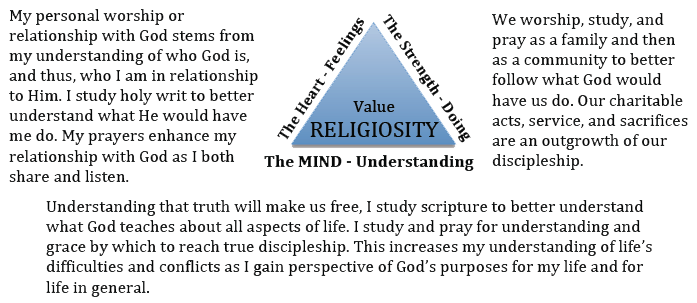
But Religiosity seems to go beyond this. It is the one value that seems to failsafe one’s efforts and desires to balance difficulty and success. All temporal things from houses to families, from jobs to portfolios, from possessions to positions, from churches to clergy are temporary in that they are vulnerable to failure, crisis, and frailty. When religiosity becomes the central value, all other values not only spring from it as part of their triad, but also find endurance through it. In linking one’s relationship to God’s infinite capacitating wisdom and purposes God becomes the stabilizing, non-corruptible center, sourcing one’s strength, wisdom, intelligence, and judgment.
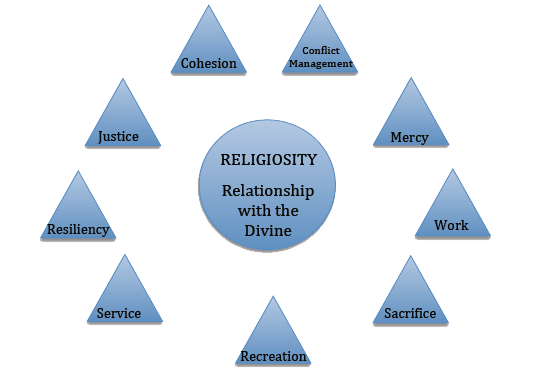
[1] Kyle Walker, PhD; The Joseph Sr. and Lucy Mack Smith Family, A Family Process Analysis of a Nineteenth-Century Household; A doctoral thesis in the Philosophy, Marriage and Family Therapy Program, School of Family Life, Brigham Young University 12/200; p46, footnote 83
[2] Ibid p21
[3] Ibid p79
[4] Wikipedia; The Stanford marshmallow experiment[1] refers to a series of studies on deferred gratification in the late 1960s and early 1970s led by psychologist Walter Mischel then a professor at Stanford University. In these studies, a child was offered a choice between one small reward (sometimes a marshmallow, but often a cookie or a pretzel, etc.) provided immediately or two small rewards if he or she waited until the experimenter returned (after an absence of approximately 15 minutes). In follow-up studies, the researchers found that children who were able to wait longer for the preferred rewards tended to have better life outcomes, as measured by SAT scores (Mischel, Walter; Yuichi Shoda, Monica L. Rodriguez (1989). “Delay of gratification in children.” Science 244: 933–938.), educational attainment, body mass index (BMI) and other life measures. (see Wikipedia for further references)
[5] Ibid Walker p8
[6] Ibid Walker p8
[7] Ibid Walker p9
[8] Ibid Walker p9
